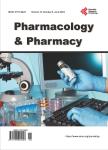Co-Localization of Alpha1-Adrenoceptors and GPR55: A Novel Prostate Cancer Paradigm?
Co-Localization of Alpha1-Adrenoceptors and GPR55: A Novel Prostate Cancer Paradigm?作者机构:College of Medical Veterinary & Life Sciences School of Life Sciences University of Glasgow Glasgow UK
出 版 物:《Pharmacology & Pharmacy》 (药理与制药(英文))
年 卷 期:2015年第6卷第4期
页 面:212-220页
学科分类:1002[医学-临床医学] 100214[医学-肿瘤学] 10[医学]
主 题:Prostate α1-Adrenoceptor GPR55 Doxazosin
摘 要:α1-adrenoceptors (α1-ARs) and “cannabinoid-like G Protein Coupled Receptor 55 (GPR55) belong to the G-protein coupled receptor (GPCR) family and play a crucial role in regulating prostate function. Although physical and functional interactions between the cannabinoid and adrenergic systems have been reported, analysis of functional interactions between α1-AR and GPR55 in normal and neoplastic prostate has not been reported. Since GPR55 levels are high in rodent adrenal gland, we propose a function link between the adrenergic system and GPR55 receptor. Confocal Laser Scanning Microscopy (CLSM) was employed to examine the endogenous α1-AR and GPR55 expression and their co-localization, expressed as fluorescence, in vitro in human andro-gen-insensitive PC-3 and androgen-sensitive LNCaP prostatic carcinoma cell lines, using the fluo-rescent ligands—Syto 62 (nuclear stain), BODIPY FL-Prazosin (QAPB;fluorescent quinazoline α1-AR ligand) and Tocriflour (T1117;a novel fluorescent diarylpyrazole cannabinoid/GPR55 ligand). Fluorescent ligand binding in untreated PC-3 cells and LNCaP cells and spheroids showed hetero-geneous expression of both α1-ARs and GPR55. A small proportion of cells had both α1-ARs and GPR55 in relatively equal numbers indicating a degree of co-localization. Co-localization of fluo-rescent ligand binding exhibited a stronger correlation in LNCaP (0.87) as compared to PC-3 (0.63) cells. Upregulation of α1-AR was observed in PC-3 cells following chronic doxazosin incubation. Robust T1117 binding, suggestive of GPR55 upregulation, was also observed in these cells. The presence of subtype-rich cells with a degree of co-localization between α1-ARs and GPR55 indicates a possibility for dimerisation or functional interaction and a new paradigm for functional synergism in which interactions may be either between cells or involve converging intracellular signaling processes.



